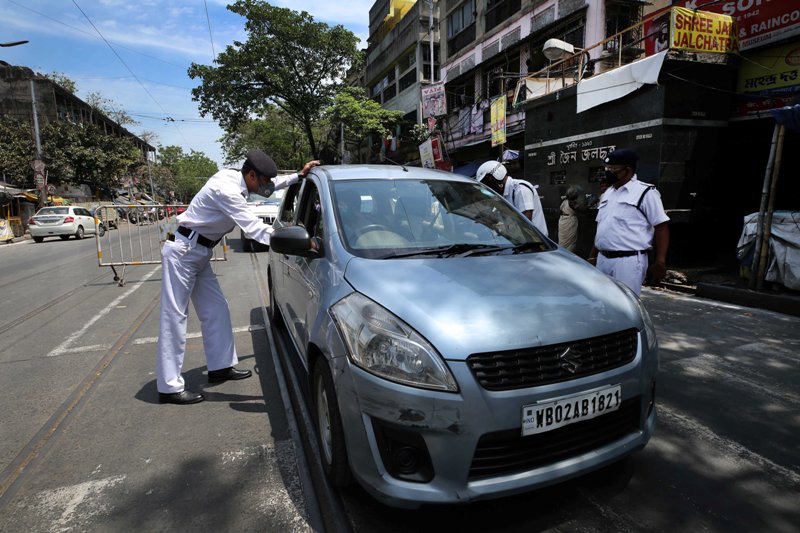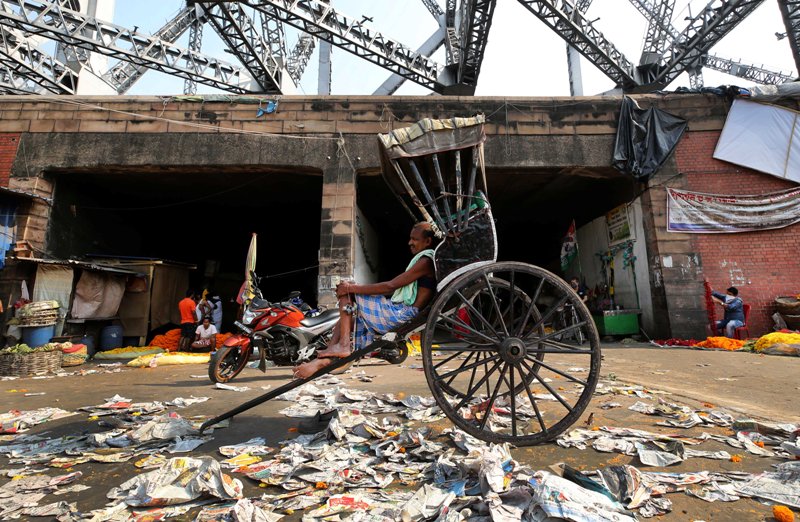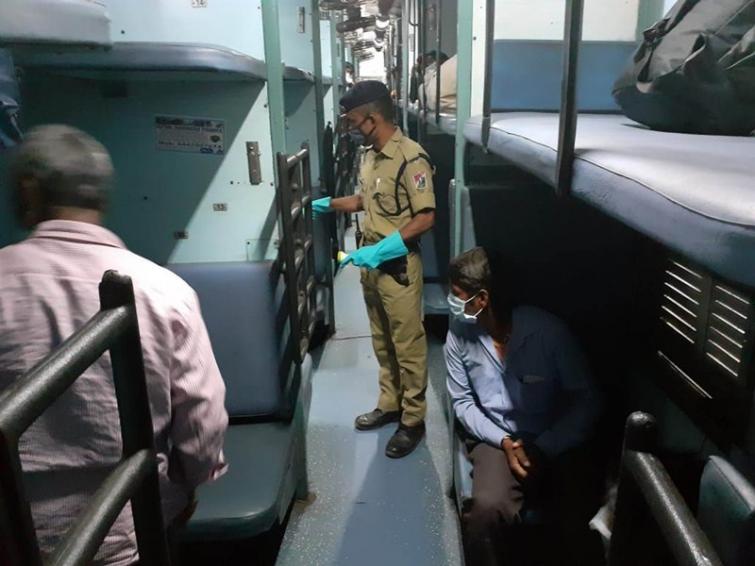
COVID-19 lockdown extended for 2 weeks, parts of India to open up
New Delhi/IBNS: The Union Home Ministry on Friday announced that the nationwide lockdown in India will be extended for two more weeks after May 4, noting that the country has been successful in averting more casualties from coronavirus.
According to the government, the six-week shutdown in India has helped in stemming the spread of COVID-19.
#Lockdown extended for two more weeks beyond May 4 due to #COVID2019india#IndiaFightsCoronavirus
— PIB India #StayHome #StaySafe (@PIB_India) May 1, 2020
(1/2) pic.twitter.com/a5yxuFvEJ5
In a statement, the Ministry of Home Affairs noted that governments of all States and UTs have to strictly enforce lockdown phase 3 guidelines, without any dilution whatsoever.

States can impose additional restrictions on activities which are permitted, based on their own assessment, in order to check the spread of the contagion.
No separate permissions needed for activities permitted to operate till May 3, 2020@HMOIndia mandates Governments of states and UTs to strictly enforce #Lockdown3 guidelines, without any dilution whatsoever#LockdownExtended
— PIB in Maharashtra 🇮🇳 #MaskYourself 😷 (@PIBMumbai) May 1, 2020
(18/18, end of thread🧵) pic.twitter.com/Nb93htdd7v
States can impose additional restrictions on activities which are permitted, based on their own assessment, in order to check the spread of #COVID19#Lockdown3 #LockdownExtended pic.twitter.com/MoiFYlmFcm
— PIB in Maharashtra 🇮🇳 #MaskYourself 😷 (@PIBMumbai) May 1, 2020
The new guidelines state that "for the well-being and safety" of people, the movement for all non-essential activities will be banned between 7 pm and 7 am.
In its renewed order, the HMO allowed all goods traffic with no need for any separate pass of any sort.
"All goods traffic is to be permitted. No State/ UT shall stop the movement of cargo for cross land-border trade under Treaties with neighbouring countries," the government guideline said.
What about movement of goods during #Lockdown3?
— PIB in Maharashtra 🇮🇳 #MaskYourself 😷 (@PIBMumbai) May 1, 2020
✅All goods traffic is to be allowed, no need for any separate pass of any sort, says @HMOIndia #LockdownExtended pic.twitter.com/BoYPVHcswp
MHA demarcates country into Zones:
Extending the lockdown for the second time, the home ministry demarcated the country into red zones with "significant risk of spread of the infection"; green zones with either zero cases or no confirmed cases in the past 21 days; and those in between as orange.
The green and orange zones have been provided several relaxations to revive economic activity which have been stalled since March 25, the announcement of the first phase of lockdown.
No activity except most essential will be allowed in containment zones.
Incidentally, all the economically-important cities including Delhi, Mumbai, Bengaluru, Chennai and Ahmedabad have been marked as red zones and will remain under strict lockdown.
What is permitted and what not:
Under the new guidelines, a limited number of activities will remain prohibited throughout the country, irrespective of the zone.
These include travel by air, rail, metro and inter-State movement by road; running of schools, colleges, and other educational and training/ coaching institutions; hospitality services, including hotels and restaurants; places of large public gatherings, such as cinema halls, malls, gymnasiums, sports complexes etc.
However, movement of persons by air, rail and road is allowed for select purposes, and for purposes as permitted by MHA, a government statement claimed.
Since all non-essential activities will remain strictly prohibited between 7 pm to 7 am, local authorities shall issue orders under appropriate provisions of law, such as prohibitory orders or curfew under Section 144 of CrPC, for this purpose to ensure strict compliance.

In all zones, persons above 65 years of age, persons with co-morbidities, pregnant women, and children below the age of 10 years, shall stay at home, except for meeting essential requirements and for health purposes.
Out-Patient Departments (OPDs) and Medical clinics shall be permitted to operate in Red, Orange and Green Zones, with social distancing norms and other safety precautions; however, these will not be permitted within the Containment Zones.
In the Red Zones, outside the Containment Zones, certain activities are prohibited in addition to those prohibited throughout the country. These are: plying of cycle rickshaws and auto rickshaws; running of taxis and cab aggregators; intra-district and inter-district plying of buses; and, barber shops, spas and saloons.

Certain other activities have been allowed in the Red Zones with restrictions. Movement of individuals and vehicles is allowed only for permitted activities, with a maximum of 2 persons (besides the driver) in four-wheeler vehicles, and with no pillion rider in the case of two-wheelers.
Industrial establishments in urban areas, viz., Special Economic Zones (SEZs), Export Oriented Units (EOUs), industrial estates and industrial townships with access control have been permitted.
The other industrial activities permitted are manufacturing units of essential goods, including drugs, pharmaceuticals, medical devices, their raw material and intermediates; production units, which require continuous process, and their supply chain; manufacturing of IT hardware; jute industry with staggered shifts and social distancing; and, manufacturing units of packaging material.
Construction activities in urban areas have been limited to in-situ construction (where workers are available on site and no workers are required to be brought in from outside) and construction of renewable energy projects. Shops in urban areas, for non-essential goods, are not allowed in malls, markets and market complexes.
However, all standalone (single) shops, neighborhood (colony) shops and shops in residential complexes are permitted to remain open in urban areas, without any distinction of essential and non-essential.
E-Commerce activities, in the Red Zones, are permitted only in respect of essential goods.

Private offices can operate with up to 33% strength as per requirement, with the remaining persons working from home.
All Government offices shall function with senior officers of the level of Deputy Secretary and above at full strength, and the remaining staff attending upto 33% as per requirement.
In the Orange Zones, in addition to activities permitted in Red Zone, taxis and cab aggregators will be permitted with 1 driver and 2 passengers only.
Inter-district movement of individuals and vehicles will be allowed for permitted activities only.
Four wheeler vehicles will have maximum two passengers besides the driver and pillion riding will be allowed on two-wheelers.
In the Green Zones, all activities are permitted except the limited number of activities which are prohibited throughout the country, irrespective of the Zone.
So, here is what is permitted in Green Zones, as per @HMOIndia's #lockdown guidelines issued today#Lockdown3 #LockdownExtended pic.twitter.com/8GhpKzjF5Q
— PIB in Maharashtra 🇮🇳 #MaskYourself 😷 (@PIBMumbai) May 1, 2020
However, buses can operate with up to 50% seating capacity and bus depots can operate with up to 50% capacity.
The government also stated that no separate/ fresh permissions will be required from authorities for activities already permitted to operate under the guidelines on Lockdown measures up to May 3, 2020.
Special train services for migrants:
Earlier, days after the Ministry of Home Affairs allowed the movement of migrant workers, students, pilgrims and other people stranded across the country amid the lockdown, the first train carrying 1200 labourers left from Lingampally in Telangana for Jharkhand's Hatia district, media reports said.

Director-General, Railway Protection Force (RPF) Arun Kumar said the train left at 4.50 am and is expected to reach Hatia at 11 pm, running non-stop.
The train has 24 coaches and each coach carried only 54 people instead of 72 which is its usual capacity.
Support Our Journalism
We cannot do without you.. your contribution supports unbiased journalism
IBNS is not driven by any ism- not wokeism, not racism, not skewed secularism, not hyper right-wing or left liberal ideals, nor by any hardline religious beliefs or hyper nationalism. We want to serve you good old objective news, as they are. We do not judge or preach. We let people decide for themselves. We only try to present factual and well-sourced news.





.JPG)


